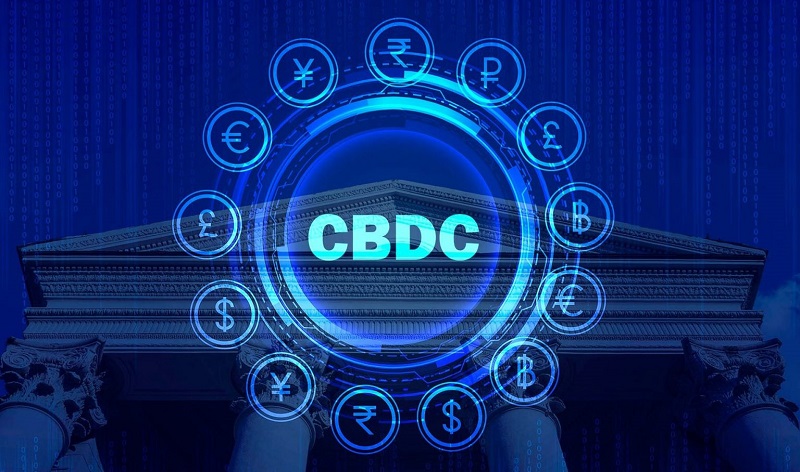
Overview of Digital Currency – Part 3: The Central Bank Digital Currency (CBDC)
The Central Bank Digital Currency (CBDC) can improve the efficiency and safety of the whole retail payment system and the valuable wholesale payment systems, enhancing the efficiency of the payment. In addition, CBDC also benefits the wholesale and the interbank payments. Currently, 88% of the CBDC projects use blockchain technology for the experiment and maintenance of their systems.

A Central Bank Digital Currency (CBDC) is a central bank-issued digital currency that has a national unit of account and represents the central bank's debt obligations. There are two types of CBDC coins that are currently popular in the world: retail CBDC and wholesale CBDC.
“Retail” CBDCs serve end users (such as households and businesses) for everyday payment purposes, as an alternative to coins and paper money. CBDC is different from money transfers, e-wallets, and payment cards because CBDCs are direct debt obligations of the central bank, while other forms are debt obligations of intermediary financial institutions. Retail CBDC projects will often aim to expand people and businesses' access to financial services, help improve microfinance and improve labor productivity.
“Wholesale” CBDCs are used primarily in the interbank market. Designed for use between central banks and commercial banks to clear large amounts of money. This form of CBDC is similar to reserve money and current accounts at central banks. This “wholesale” CBDC is also used in the modern financial system, where tokens with algorithms automatically process smart contracts to review the financial position of financial institutions and central banks.
As of April 2021, according to PriceWaterHouseCooper (2021), there are more than 60 central banks in the world that have conducted CBDC research and some countries have implemented CBDC in practice. In addition, the wholesale CBDC projects have not achieved significant success, only about 70% of the projects are announced to be experimental, and almost no country has implemented the wholesale CBDC.

Bahamas and Cambodia are two countries that have put digital currency into circulation
In terms of technology infrastructure, 88% of CBDC projects use blockchain technology for testing and maintaining the digital currency system. The blockchain system has many outstanding advantages such as high security, transactions automation by smart contracts, the convenience for auditing and monitoring transactions, secured personal information, and it is very easy to convert with other digital assets. Blockchain technology has been forecasted to be the financial revolution of the society, helping to improve the speed and cost of transactions while eliminating intermediaries, making the public financial market transparent and accessible to the majority of the population.

CBDCs can improve the efficiency and safety of both retail payment systems and high-value wholesale payment systems
Currently, the use of cash is decreasing because it is now much easier to pay by card or through mobile applications. Although it is very unlikely that the central bank will remove cash from the payment system, it is still possible because of the negative effects of cash. Cash is difficult to track by nature, so it is often used for tax evasion, money laundering and illicit transactions. Cash also creates a security risk in the monetary movement and payments. Therefore, future governments want to get rid of cash to reduce crime and improve their tax collection. Therefore, cryptocurrencies are created by the Central Banks to ensure that they still play a role in the function of money. Based on technology, CBDC can improve the efficiency and safety of both retail payment systems and high-value wholesale payment systems. On the retail side, this digital currency could improve the efficiency of payments. For example, payment at point of sale (POS), online and peer to peer (Peer to Peer – P2P). CBDCs can also be beneficial for wholesale and interbank payments; another example is that it can facilitate faster settlement and extend processing time.
Transactions on CBDC are usually done based on Tokens issued by the Central Banks. Like Bitcoin, this approach will use a form of distributed ledger technology (DLT) to verify ownership of each token and validate payment transactions without requiring direct participation by any other clearing agency. However, in contrast to Bitcoin and other virtual currencies, the Central Banks determine the supply of the CBDC token. They will be fixed in nominal terms and treated as legal tender. Furthermore, the Central Banks can establish transparent procedures for transactions, updates, and integration of other transactions into these distributed ledgers (DLTs).
See the full research paper "Digital Currencies and A New Generation of Global Monetary System" by the authors here.
The authors: Dr. Le Dat Chi, MSc. Truong Trung Tai, MSc. Nguyen Trieu Dong (UEH School of Finance).
This is an article in the Series of articles on spreading research and applied knowledge from UEH, cordially invites readers to watch DIGITAL ECONOMIC Knowledge Newsletter 9 An Overview of Digital Currency – Part 4: “The typical CBDCs”
News, photos: Author Groups, Department of Marketing and Communication, Department of Research Management & International Cooperation


![[Podcast] Does the Financial Flexibility Prevent Stock Price Crash Risk during COVID-19 Crisis? Evidence from the Vietnamese Stock Market](https://en.ueh.edu.vn/images/upload/thumbnail/ueh-thumbnail-114718-071624.png)
![[Podcast] An Evaluation Of Two Business English Course Books, Business Partner B1+ Business Partner B2: Students’ And Teachers’ Perspectives](https://en.ueh.edu.vn/images/upload/thumbnail/ueh-thumbnail-113649-071624.png)


![[Podcast] Latest approaches for sustainable universities](https://en.ueh.edu.vn/images/upload/thumbnail/ueh-thumbnail-042022-071224.png)